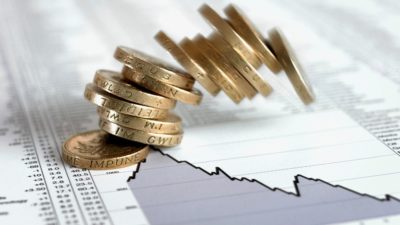It’s always hard to invest when there’s uncertainty, particularly after a stock market crash. Right now, nobody knows what’s going to happen to the economy, to business sectors, or to specific businesses. Above all, nobody knows what’s going to happen to the stock market in the short term. Even in the best of times, predicting the short-term movement of the stock market is a fool’s game.
Bearing this in mind, we need to think how we can adapt our investment strategy to take account of share price volatility and variance in potential outcomes. While we don’t know which way share prices are going to move in the short term, we do know that in the long term, they invariably track upwards as economies and businesses grow.
Reducing investment risk
Additionally, we can see that following the stock market crash, share prices are currently low by historical standards. That is certainly the case here in the UK. Therefore, as long as we have long holding periods, it’s likely that our investments will gain in value. In fact, along with diversification, extending investment holding periods is the best way to reduce investment risk. This holds true even in the most uncertain of times.
With share prices at such low levels, it also follows – somewhat counterintuitively – that now is a better time to invest for the long term, than any other point when share prices were higher. Those who invested a few years (or months) ago are likely sitting on losses. Whereas those entering the market now, after the stock market crash, are more likely to come away with inflated returns. Investors are rewarded for taking on the perceived risk of investing during periods of uncertainty.
Investing after a stock market crash
I’ve written before about how regular investing in the stock market can help to smooth out the average price that we pay for our shares. By investing the same amount every month, we eliminate the risk of buying all our shares at market tops. Instead, if done over a period of years, we will likely buy shares at all stages of the stock market cycle. This means we don’t need to worry about market timing, and we can focus instead on buying the shares that we like.
One slight variation to this strategy is to vary the amounts we invest every month, in accordance with stock market valuations. This would result in us investing greater amounts when shares look cheap, and less when they look expensive. For instance, we could say that when the average price-to-earnings ratio of the FTSE 100 is below 15, we would invest more than when it was above 15. Under this strategy, we would have been investing more after the stock market crash, taking advantage of the lower prices.
Of course, one big problem with this approach is that in a rising market, we may end up investing less than we should do. For best results, we would need to regularly review the valuation level that dictates whether we buy more or less. Also, depending on the route we use to buy our stocks, it could be that investing this regularly incurs higher transaction costs. To mitigate this, instead of investing once a month, we could invest larger amounts every three months.







